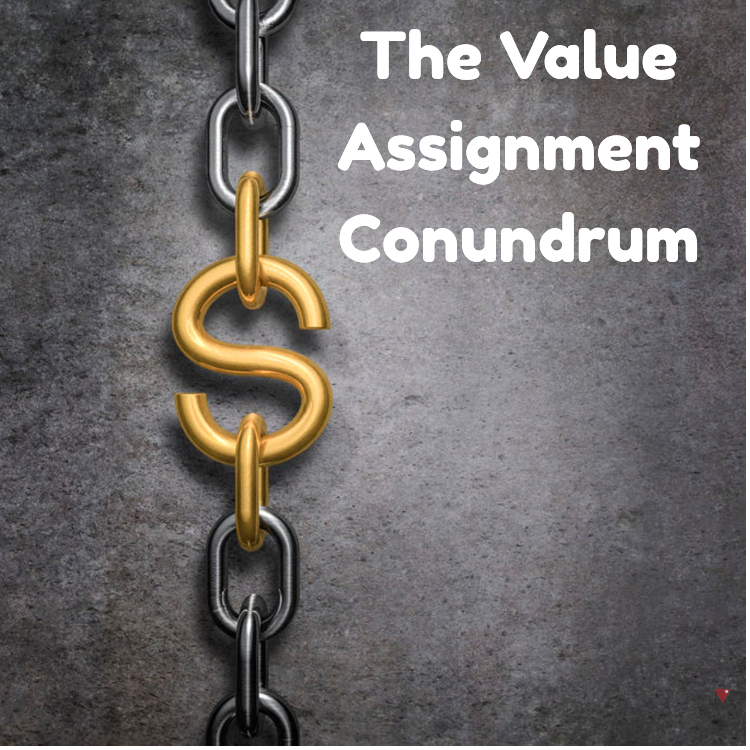Blogs, Freebies, and Paywalls: The Value Assignment Conundrum

I’m inspired. Sometimes, you need to look at what other people are saying in order to put your own thoughts into words. And so, I can hopefully now frame the great value assignment conundrum – at least to my own satisfaction.
At what point does giving away too much for free diminish the perceived value of what you do. And if you’ve long-since passed that threshold, what do you have to do re-instill a sense value?
What is The Value Assignment Conundrum?
I’m far from the first person to tackle the question, although perhaps others have not used this specific term.
This 2017 article by Ramit Sethi in Business Insider stood out in my memory. Although the actual title is very long, the essence of the article is summed up in the url:
PEOPLE DON’T VALUE FREE STUFF
The author used to give his training materials away free to anyone who asked. But nobody he ever gave stuff to ever opened it.
This quote pretty much sums it up:
“Look, I want to give you this material. I know it can help you. It’s not about the money, but in my experience, if people don’t pay, they just don’t value it.”
He also gives the example that he has free and paid email lists. The free ones have a 15-18% open rate. The paid ones, at or near 100%.
B B B But Nobody Likes Paywalls
If someone does a really great sales job on their super-duper new community, you might consider it worthwhile paying. For a while. Which is why few to none of these survive for very long.
If a blog puts in a paywall, it will probably die.
How many of you pay for online subscriptions to established newspapers? Guessing that at best, you read your maximum allotment for the month, and then look elsewhere for the rest of your news?
So, free doesn’t assign much value. But charging for what people feel they can get free elsewhere doesn’t work.
Click here to listen to a great podcast where my new LinkedIn connection John Espirian is Douglas Burdett’s guest.
John. Hates. Paywalls.
So among the many things in the podcast that I made note of, he warns people to not go that route. Instead, give away stuff.
Which brings us back to where we started.
How Do You Beat The Value Assignment Conundrum?
There’s the tried and trusted 14 or 30-day free trial. I remember when I used to do those. Once in a while, I’d start looking at whatever it was a day before I was due to be charged. More frequently, I wouldn’t look at all and would end up paying for something I never used.
I stopped doing that. Pretty much.
How about the old-school TV commercials, emulated on some websites, where they assign outrageous values to things then offer you a package for a seemingly low price:
“You get it all! A 7 gazillion-dollar value, for the unbelievable low price of just $14.99”
Throw in some scarcity marketing:
“Order in the next 20-minutes, and we’ll even throw in free shipping!”
OK, people laugh at those tactics by now. But they don’t laugh at scarcity marketing.
Scarcity Marketing Tactics
Some scarcity tactics can work if the product being sold is good enough and they treat consumers as if they have more than a little intelligence.
Such things as:
- Pay for a year and get a lifetime membership for the first n people
- Grandfathered pricing
- Lower pricing for if you sign up in the first 30 days
- Steep discounts on an annual membership
- But x get y free
And yes, offering the first 30 days free is perfectly valid. But my advice to potential buyers regarding that is, don’t sign up for one of these unless you already know you want what you’re signing up for. Sign up and see just doesn’t work. And please! Start using it as soon as you possibly can after you sign up. The longer you wait, the less likely you are to assign it any value at all. But soon enough, you’ll have to pay anyway, unless you remember to cancel! So what was the point for you or the vendor!
You may also want to read: How to Better Read Your Audience To Improve Content Marketing Results
Takeaways
Ultimately, you must elicit trust and positive feelings by giving stuff away. But what you’re trying to sell will have to offer a whole lot more value.
At some point, all of us who give stuff away fall into the trap of undervaluing the things we charge for. We have sleepless nights worrying if our clients feel they’re getting value for money.
But we’re in this to make money. So we can’t give everything away for free.
We have to sell something people want to pay for. We need to understand what the people we’re giving away stuff to would pay for. And if we’re scared to put a decent value on what we’re selling, others will not consider it of sufficient value to pay their hard-earned money for.
Sign Up For Our Mailing List
If you’d like to receive more in-depth articles, videos and Infographics in your inbox, please sign up below

Sign up for the newest articles from Curatti, delivered straight to your inbox
Featured image: Copyright: ‘https://www.123rf.com/profile_grandeduc‘ / 123RF Stock Photo
Andy Capaloff
Latest posts by Andy Capaloff (see all)
- The Art of Asking Questions [Interactive] - October 17, 2023
- The Metaverse Is Not Dead. It’s Resting! - September 6, 2023
- How Can You Hire For Jobs That Nobody Has Experience In? Aptitude! - June 13, 2023
